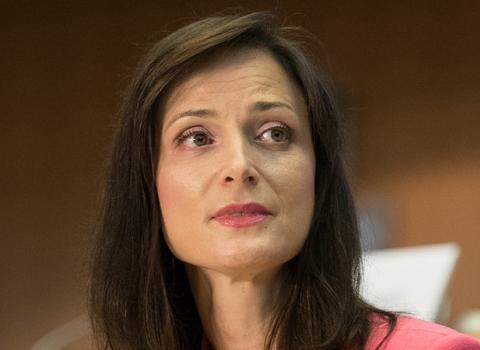Researchers worldwide are trying to develop a vaccine and antiviral treatments against the new corona virus spreading in China. At Karolinska Institutet, virus researchers Ali Mirazimi and Matti Sällberg are working to develop a prototype vaccine against the virus. But vaccine development takes time, and it will likely take at least six to nine months before an application for clinical studies can be filed and another two to three years before a vaccine could be ready for the public.
What are you working on?
When researchers in China shared the genome of the virus, we were able to almost instantly begin the work of designing different types of vaccines based on our previous knowledge of SARS and MERS, and our experience in vaccine development against hemorrhagic fever and liver virus. Since the corona virus is an RNA-virus that easily mutates, we want to focus on the different parts of the virus that does not change, meaning they are genetically stable and could work on a global scale. Within a few weeks, we hope to have all the reagents to be able to study if our strategy produces an immune response and protection against the virus. We’re working simultaneously on two tracks for vaccine development, one that focuses on a global vaccine and one that focuses on a vaccine for people who are exposed to infected individuals in their jobs, such as medical staff, police officers and firemen. These different groups have somewhat different needs to consider when designing and administering a vaccine.
How likely is it that your strategy will work?
It is very difficult to say. We don’t know yet how the immune system will respond to the proteins used in the vaccine, and therefore what kind of protection it will offer. Our hope is that the body will begin to create an immune response toward these proteins and thus manage to fight the disease if infected.
What is the timeframe?
If all goes according to plan, we could potentially begin to seek approval for clinical studies in humans within six to nine months. One important factor in terms of time and cost is to achieve vaccine production according to the so-called Good Manufacturing Practice, which is the quality needed for tests on people. If we’re granted approval, we then have to go through three phases of clinical studies, all with different requirements. So, we’re talking about at least two to three years before we may have a vaccine that could be rolled out to the public.
Do you have the resources to continue that long?
Right now, we’re financing this within the frame of existing funds. We are collaborating with several different networks and other countries, and if we manage to develop a prototype vaccine, we will need much bigger resources to handle the clinical studies as well as the potential production and distribution. The fact that we are at all able to try to develop a corona virus vaccine is because we already have a platform for vaccine development that we can use for this virus. It involves a European project that aims to develop a vaccine against the Crimean–Congo hemorrhagic fever and that is being run by the Public Health Agency of Sweden, the National Veterinary Institute and Karolinska Institutet since 2017.
Is it possible to speed up vaccine development in an emergency?
There are some exceptions that the World Health Organization and the national medical products agencies may decide on, such as in the event of a crisis. But one also must consider the potential side-effects and look at what individuals are affected the most. Perhaps in this case—considering that the mortality rate is still relatively low—a vaccine should mainly be targeted toward those with serious underlying conditions and those who have jobs that put them in contact with infected people, such as medical and emergency staff, and not toward the general public. In the end, it’s up to each country to decide what it wants to do.
This article was first published 31 January 2020 by Karolinska Institutet




 A unique international forum for public research organisations and companies to connect their external engagement with strategic interests around their R&D system.
A unique international forum for public research organisations and companies to connect their external engagement with strategic interests around their R&D system.